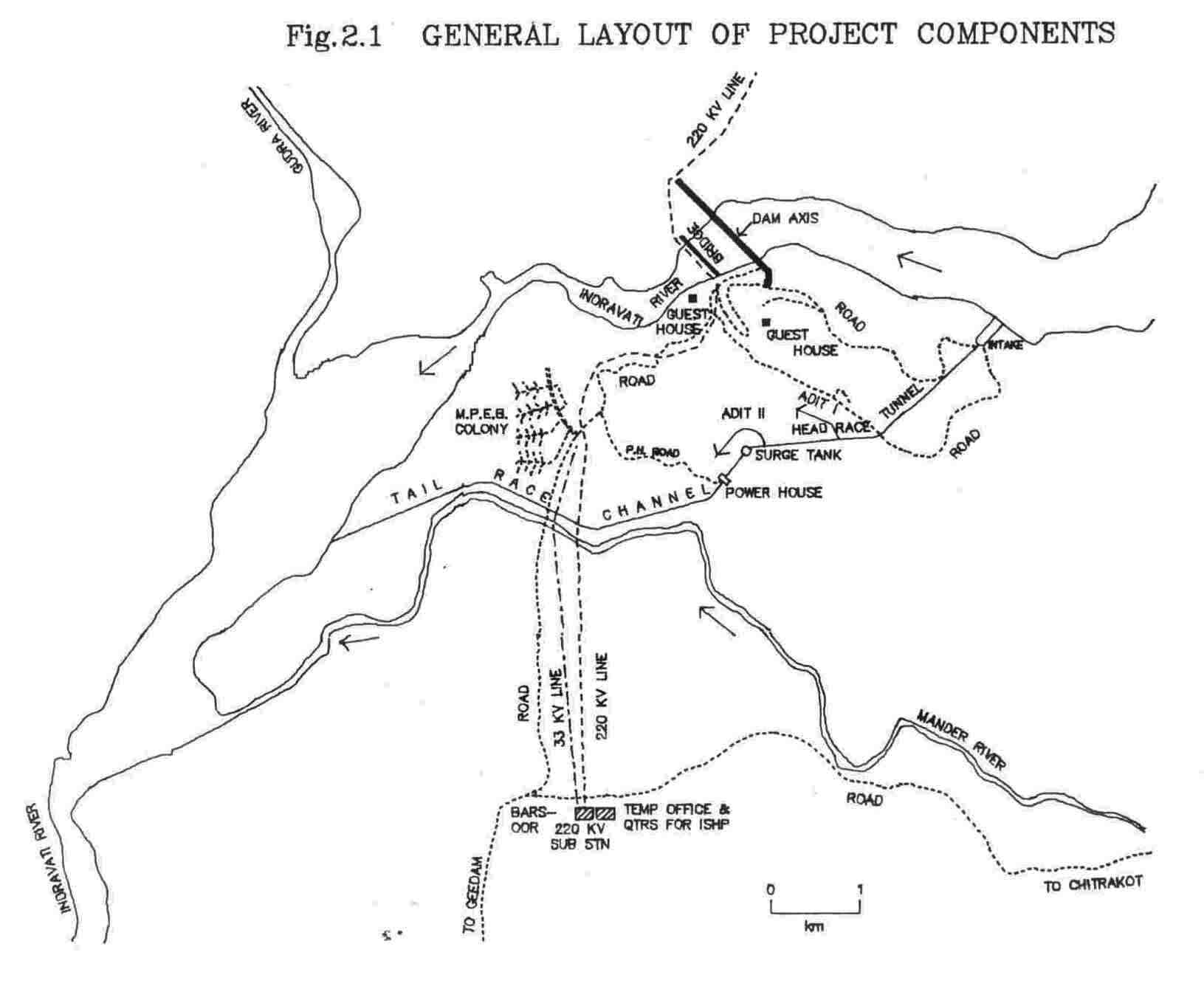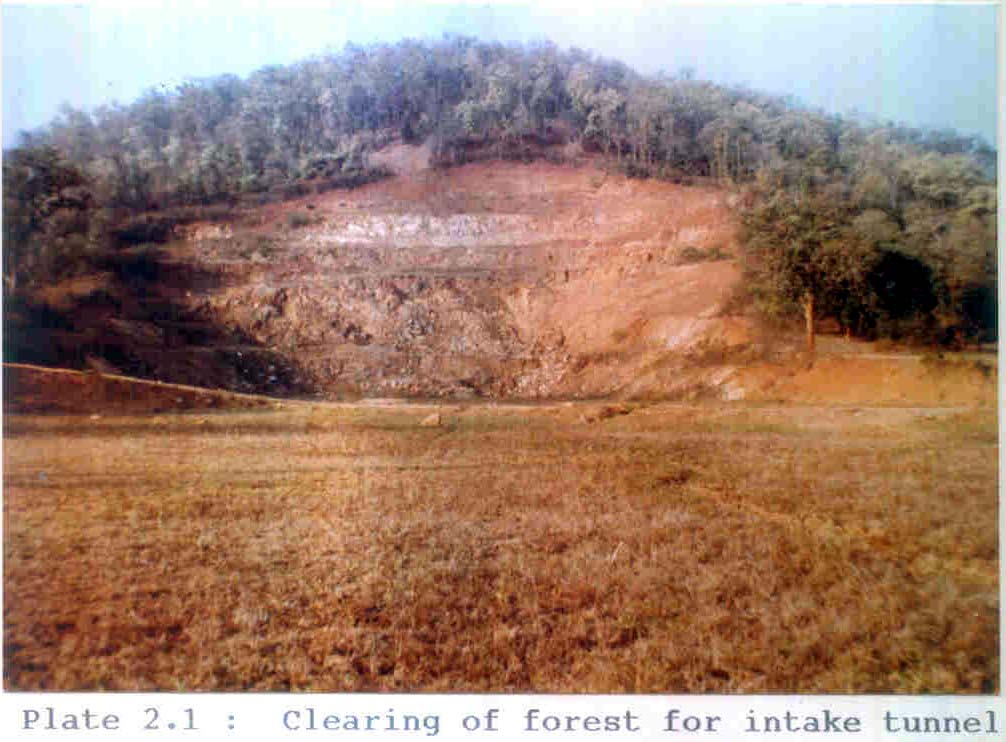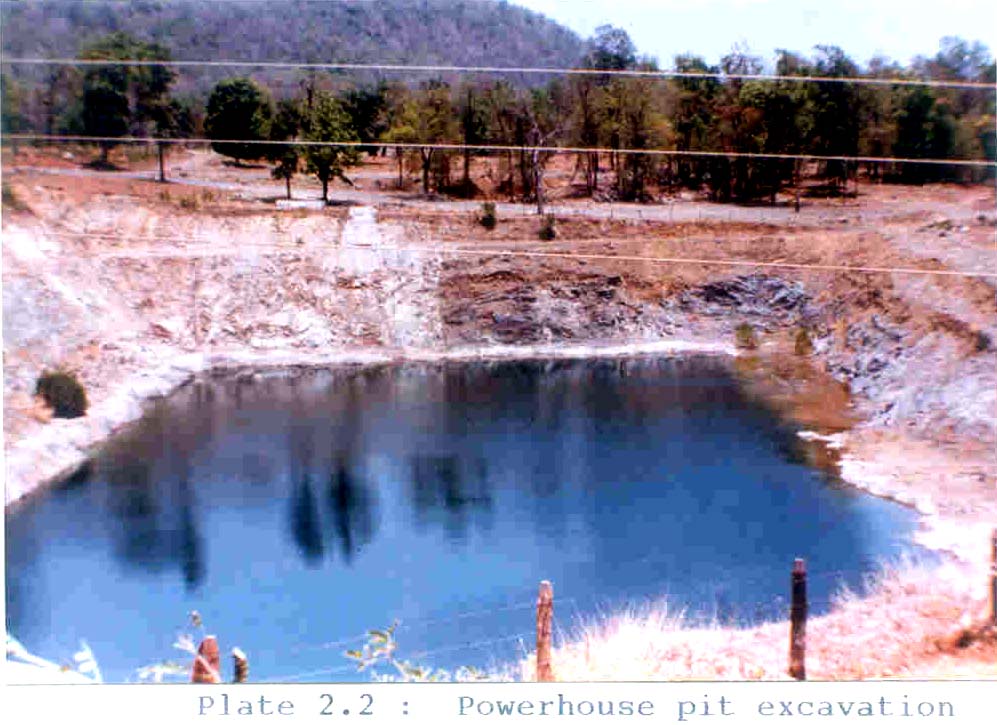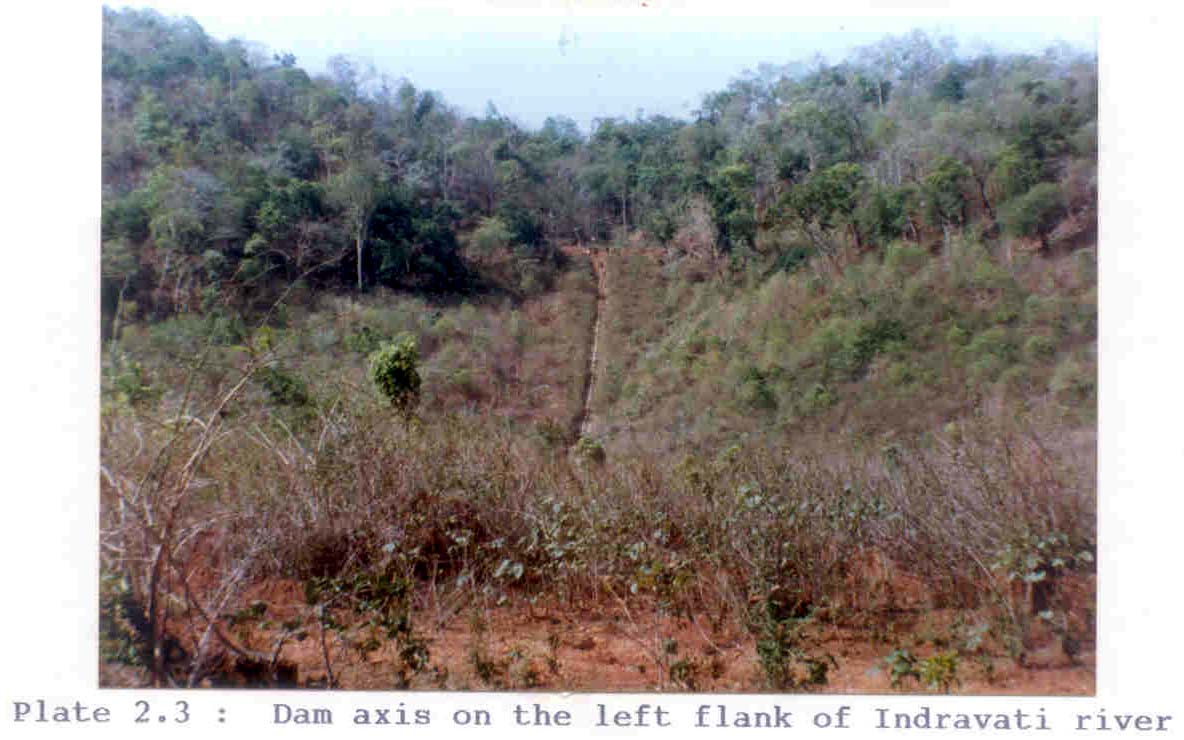Project Description
Bodhghat Hydel Project on Indravati river in Bastar District of Madhya Pradesh is a major one in the state. The project is located at latitude 190 12’ and longitude 810 24’ near the village Barsoor 100 km from Jagdalpur town, headquarters of Bastar District.
The project comprises the following major components:
(i) A composite dam of total length of 1720 m at dam top level consisting of a 855 m long, 90 m high concrete gravity dam and fill dams on both flanks, of 500 m length on the left and 365 m length on the right flank. The concrete gravity dam has a spillway of 399 m length consisting of 21 radial crest gates each of 15 m x 13 m.
(ii) A 3 km long 12.5 m dia head race tunnel.
(iii) A surge shaft 48 m dia and 100 m deep.
(iv) Four pressure shafts of 6 m dia each and 410 m length.
(v) A surface power house to house 4 generating units each of 125 MW.
(vi) A 5 km long tail race channel consisting of a short length tunnel, a cut and cover section of 300 m length and rest as open cut channel.
Layout of the channel is given in Fig. 2.1..

This project is purely a hydroelectric project having a firm power potential of 107 MW with an installed capacity of four units of 125 MW each to give a peaking generation of 500 MW with a total outlay of Rs. 475.8 crores (1983). The annual power generation would be 1300 million units.
The Bodhghat Hydroelectric Project will generate in the ultimate stage with the water apportioned to the State of Madhya Pradesh under the award of Godavari Tribunal, a firm annual energy of 911 GWh and a seasonal energy of 1357 GWh comprising of 977 GWh firm and 380 GWh seasonal. The project is designed as a peaking station with an installed capacity on 500 MW (4 units of 125 MW) to provide a very large peaking potential to the power system of Madhya Pradesh which at present has about ten percent of hydel generation in its predominantly thermal power based system.
The Planning Commission, Government of India, accorded investment approval to this project estimated then to cost Rs. 209.3 crores vide No. 1/25(IS)/3/17-INE dated 24.2.1979. The project was required to be completed in a period of six years. However, due to paucity of funds, works could not progress.
The Government of India decided to pose the project for financial assistance from the World Bank and accordingly, a special project report was submitted to the World Bank in April 1983 with the revised cost of the project estimated at Rs. 475.8 crores. The preparatory mission of the World Bank visited India in June 1983 and Bank’s Appraisal Mission visited the project in October 1983 and completed the technical appraisal of the project. Negotiations with the World Bank took place in April 1984 in Washington and finally the World Bank announced its approval to grant assistance, agreements for which have been signed on 1st March 1985 and loan declared effective:
| (i) | IBRO US Dollars | 157.4 million |
| (ii) | IDA Special Fund equivalent to Credit SDR-122 m US Dollars | 129.8 million |
| (iii) | IDA-SDR 12.4 Equivalent to US Dollars | 13.2 million |
| 300.4 million | ||
| (about Rs. 375 crores) |
The cost of generation on this project is assessed at 44.20 paise per KWh at 10 percent discount rate. The project forms part of the least-cost expansion programme for the Western Region in the Long Term Plan prepared by the Central Electricity Authority in September 1982. The project is yet to receive clearance of the Government of India under the Forest Conservation Act, 1980.
Present status of the project:
Infrastructural works and certain preparatory construction works related to the project components have already been completed. The preliminary works completed are: storage facilities for cement, steel, etc., downstream bridge across Indravati river to provide all weather approach to the right bank, approach channel to intake structure upto race of the head race tunnel, two adit tunnels to the main head face tunnel, power house pit excavation (Plate 2.1, 2.2 and 2.3) for dam foundation in non-overflow blocks, besides the roads in township area and approach roads to various project components. About 300 temporary staff quarters at Barsoor and near Mandar Nallah have also been constructed. At present only the compensatory afforestation work of the project is in progress, and all other works are at stand-still.



Construction schedule:
As per the construction programme agreed to with the World Bank, the first unit was to be commissioned by the end of 1991, and other three units at an interval of three months. However, due to non-clearance of the project under Forest Conservation Act f980, the agreed programme could not be adhered to. Assuming that the clearance of the project will be given by middle of 1988, the revised construction schedule has been drawn up. According to this revised schedule, first units will be commissioned by the end of year 1993 and the other three units at an. interval of three months thereafter.
Last Updated: October 3, 2015









